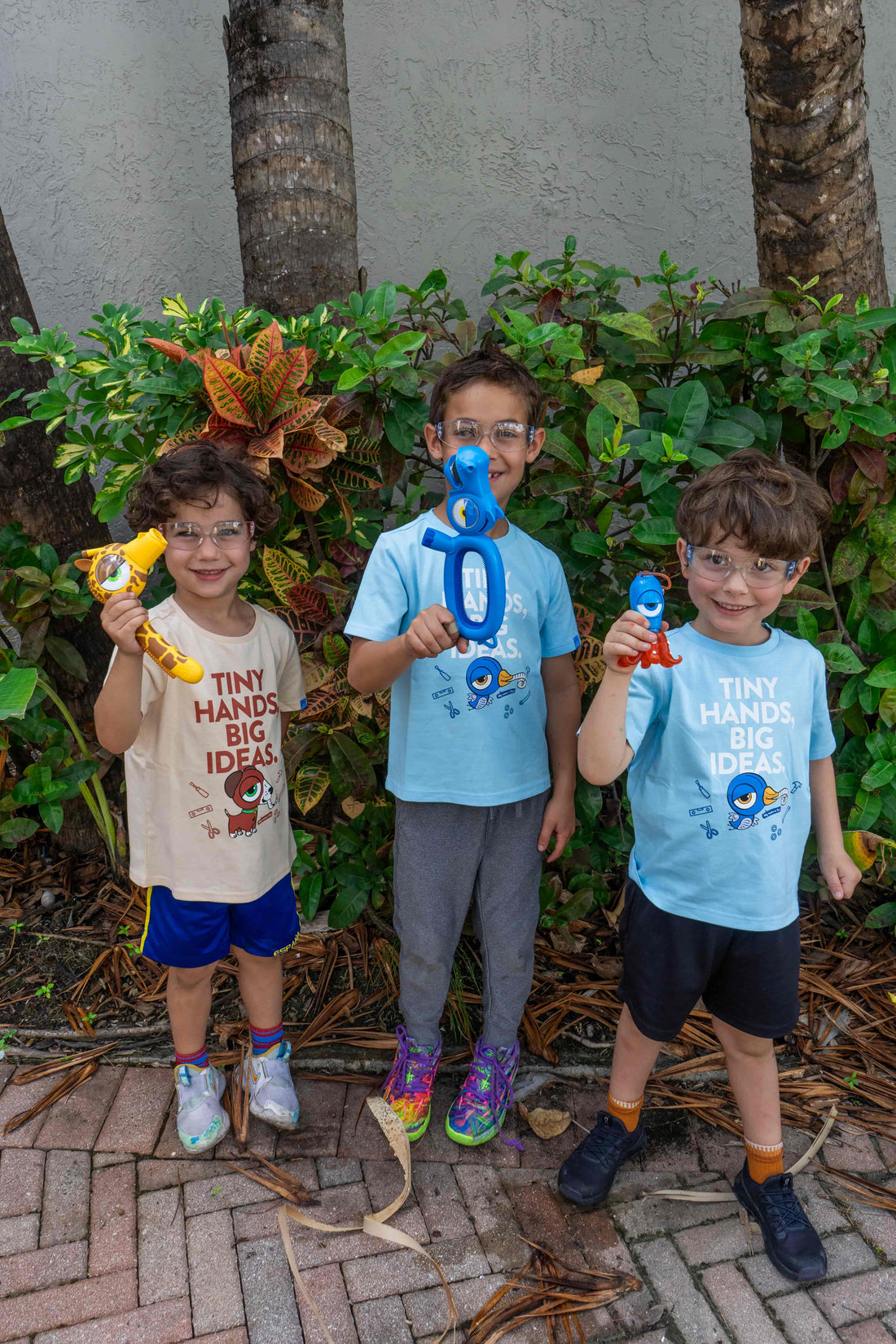
5 Essential Tools for Every Kids’ DIY Kit, From Toddlers to Tweens
Summer is here, and you know what that means. School’s out, and the screens come on. If you’re like most parents, you’re probably asking, “How can I get my kids to do something besides binge-watch cartoons or tap away on a tablet all day?” Research from the CDC shows the average child spends over seven hours a day on entertainment media, leaving many families looking for better ways to balance fun and learning.
In this post, we’ll cover five must-have DIY tools, each one matched to a specific age group, so you can help your child build confidence, creativity, and real-world skills. We’ll also share one simple DIY project for each stage, giving you an easy way to help them start using their new tools right away. And don’t miss the bonus safety reminder at the end, because no kit is complete without protective glasses.
Explore HandyFamm’s comprehensive DIY Kids Tools collection.
Best DIY Toy for Ages 3 to 4: Bebe Bird Pink Tape Measure
If you have a curious toddler at home, you know they love copying everything you do, especially regarding tools. The Bebe Bird pink tape measure is a perfect fit for ages 3 to 4. It is cute, safe, and made just for little hands

Here is why I recommend it for every toddler’s DIY kit:
-
It introduces measurement without stress
Kids this age do not care about inches or centimeters. They just want to pull the tape, see how long things are, and feel like a big kid.
-
It is a kid-safe tape measure you can trust
The tape is soft with gentle recoil, so no snapping fingers. The big buttons are easy for little hands to handle.
-
The animal measuring tape design is irresistible.
Let’s be honest. The cute bird shape makes this a funny measuring tape that they will want to play with.
-
It boosts fine motor skills through play
Measuring their stuffed animals, lining up toy cars, or helping you with small tasks builds hand-eye coordination and confidence.
Simple DIY project to try:
Ask your toddler to help measure their toys or books. Have them line them up from shortest to tallest using the pink tape measure. They will love showing you their results, and it is a great way to sneak in some learning.
Curious what it looks like? You can view the Bebe Bird Pink Tape Measure here. Don't worry, we have it in four different colors and shapes to match every child’s style.
Best DIY Tool for Ages 5 to 6: Fido Dog Animal Measuring Tape
At ages 5 to 6, kids start wanting to do things on their own. They are eager to measure, compare, and figure things out, not just copy what you do. That is why the Fido Dog animal measuring tape is a great fit, it helps them feel capable while keeping things playful and safe.
Here is why I like this one so much for early elementary kids:

-
It turns numbers into something they can see and touch
At this age, kids are just starting to grasp numbers and sizes. A tape measure makes it feel real. Instead of just “big” and “small,” they can start comparing, lining up, and noticing lengths on their own.
-
The dog shape keeps them smiling
Let’s be honest. Even when they are learning, they still want it to be fun. The cute dog design turns measuring into a little game, not just another “lesson.”
-
It gives them independence and safety
The slow, gentle retracting tape and chunky buttons let them explore confidently without needing constant help or worrying about snapping fingers.
Slightly more advanced DIY project to try:
Work together to measure the length and width of a few items, like their bed or the rug. Then help them calculate the area (length × width). It is a fun, gentle way to introduce early multiplication without any pressure and they will feel so proud when they figure it out.
Ready to see it in action? Take a look at the Fido Dog Animal Measuring Tape here.
Sometimes I get asked how these kinds of little projects help kids long term. Honestly, I wondered that myself at first. That’s why I put together this piece on how DIY helps kids build problem-solving and life skills. If you want to dive deeper into why this stuff matters.
Best DIY Toy for Ages 7 to 8: Stretch Giraffe Hammer
At ages 7 to 8, kids are ready to level up. They want tools that feel real but are still safe for them to handle. The Stretch Giraffe Hammer is one of my favorite picks for this age because it gives them the thrill of “real” DIY work without the risks of sharp metal or heavyweight.

Why does this tool work so well for growing hands?
-
It is designed just for them
This lightweight, ergonomic hammer fits small hands comfortably, so they can focus on practicing, not struggling to hold it steady.
-
It keeps things safe but fun
With a soft foam or plastic head, the Stretch Giraffe Hammer lets kids practice coordination and gentle tapping without worrying about smashed fingers or broken objects.
-
It connects to STEM learning naturally.
Even simple hammering tasks help strengthen hand-eye coordination, pattern following, and basic engineering thinking. If your child has been loving their pink tape measure or other measuring toys, this is the next exciting step toward more hands-on building.
DIY project idea to try:
Set up a soft “nail and board” project using a foam board and plastic pegs or golf tees. Let your child practice gently hammering the pegs in, creating shapes or patterns. It is a safe, confidence-boosting intro to real hammering motions.
Ready to nail it? Check out the Stretch Giraffe Kids Hammer here.
Best STEM Tool for Ages 9 to 10: Ollie Octopus Screwdriver

By ages 9 to 10, many kids are itching to take on more detailed, hands-on projects. They want to do more than just hammer or measure, they are ready to screw parts together, test small builds, and maybe even try their first simple circuit kit. That is where the Ollie Octopus Screwdriver shines.
Why I love this tool for budding builders:
-
It sharpens fine motor skills
Turning screws takes careful hand control. With its easy-to-grip handle and lightweight design, the Ollie Octopus Screwdriver helps kids practice twisting motions, hand strength, and precision.
-
It naturally supports STEM learning
This is the perfect tool to introduce STEM toys like beginner circuit kits or small wooden models. Kids can explore how things fit together, follow instructions, and develop problem-solving strategies, all while having fun.
-
It builds on earlier DIY excitement
If they have been using their pink tape measure or toy hammer in earlier years, the screwdriver feels like a big step forward, giving them a sense of “real” building power.
DIY project idea to try:
Hand your child a small pre-drilled board and a set of screws. Let them practice screwing and unscrewing, or challenge them to build a small wooden or foam model by following simple instructions.
Want to put this tool in their hands? Check out the Ollie Octopus Screwdriver for kids here and have fun watching them tackle their next DIY adventure.
Best DIY Tool for Ages 11 to 12: Chomp Hippo Wrench
By ages 11 to 12, kids are ready for the real deal. They are not just playing anymore; they want to understand how tools work, take on more advanced projects, and feel responsible for what they build. The Chomp Hippo Wrench is the perfect tool for this stage, giving them a chance to work with real materials in a safe, age-appropriate way.

Why it is a winner for tweens:
- It handles bigger, more advanced tasks
Whether they are tightening bolts on a bike or helping with a small home project, this wrench gives older kids a sense of real accomplishment. It is sturdy but still sized for smaller hands, so they can work confidently.
-
It supports hands-on STEM learning
At this stage, kids are ready to tackle more complex STEM toys or mechanical kits. Using a wrench teaches them about torque, tension, and how mechanical parts interact, all important foundational skills.
-
It encourages teamwork and responsibility
Kids this age want to feel useful and involved in real family tasks. Giving them a wrench means they can work alongside you on actual repairs or projects, learning not just skills but the value of contributing to the household.
DIY project idea to try:
Invite your child to help adjust a scooter, assemble furniture, or tighten a loose bolt. They will love being treated like a capable helper and seeing their skills make a real impact.
Ready to help them take the next step? Check out the Chomp Hippo STEM Wrench here:
For more insights into how DIY projects benefit children's development, check out this article by Learning Litoff.
Keep DIY Safe with Protective Glasses
This is a no-brainer. A good pair of safety glasses is a one-time purchase that will last even as your child grows and takes on bigger projects. If you are just starting them on their DIY journey, there will be projects that call for safety gear, and this is one of the most important tools to have ready.
Whether they are using a pink tape measure, exploring STEM toys, or handling real DIY tasks, eye protection is non-negotiable. Even simple projects can kick up dust, splinters, or bits of material you did not expect. Lightweight, well-fitting glasses designed for kids make sure they stay protected while they learn, build, and explore.
DIY toys for kids open the door to creativity and independence but none of that matters if you are not keeping them safe along the way.
Grab a pair of Children's Safety Glasses here.
Conclusion
Okay, there you go, these are the five tools you can start with to build your child’s DIY kit. See if their interest sparks, let them explore, and enjoy watching what they create (we will have another blog soon on how to naturally get your kid interested in DIY).
Parents, grandparents, and family friends play such an important role here. Helping a child put together a DIY kit supports their early development, as it is widely known that DIY activities help build spatial intelligence, problem-solving, and creativity, all of which have been shown to positively impact their success and confidence well into adulthood.
Want to take a deeper dive into how DIY builds spatial smarts? Check out our guide: Parent’s Guide to Boosting Spatial Smarts Using Engineering Tools for Kids.
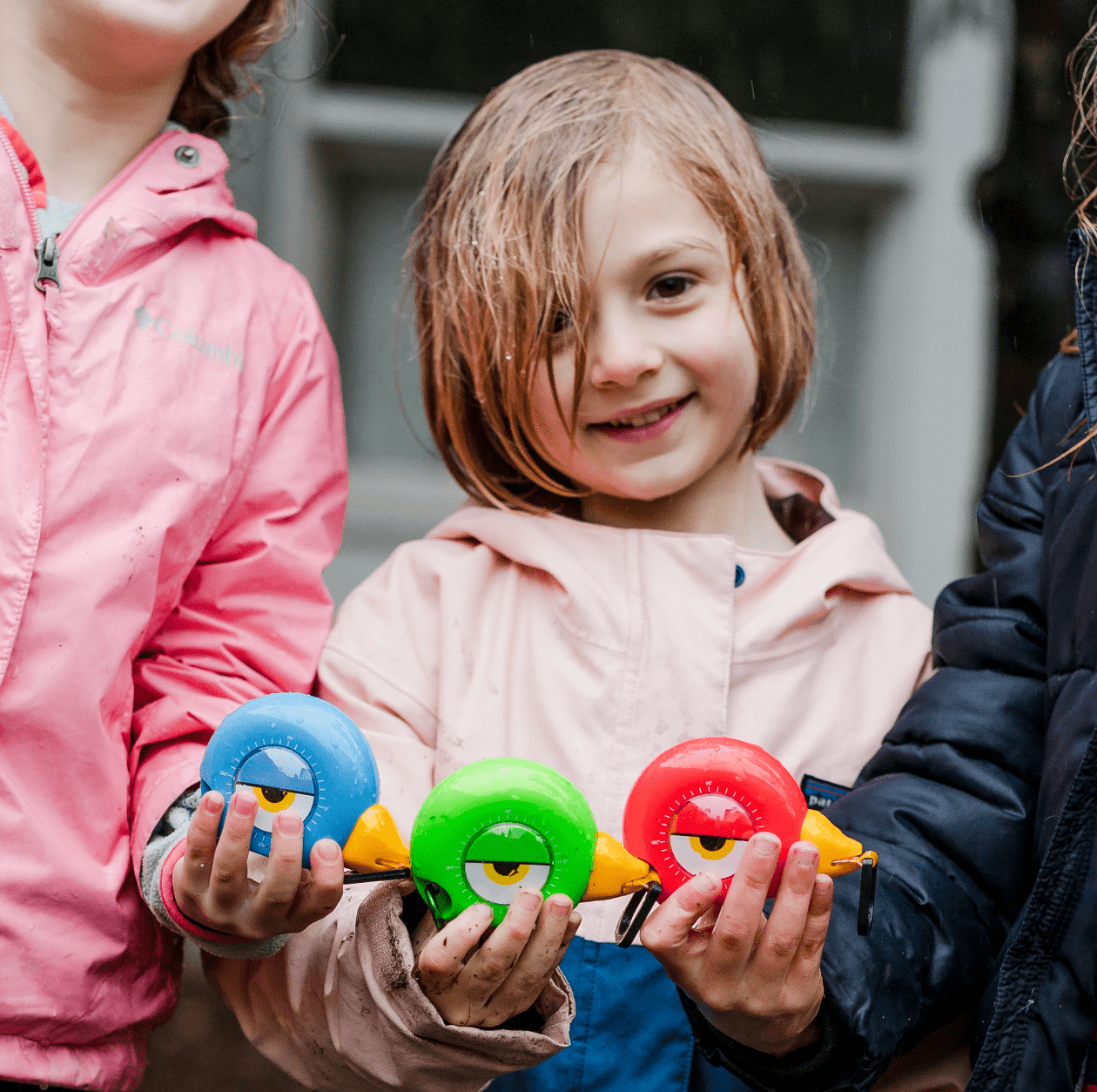

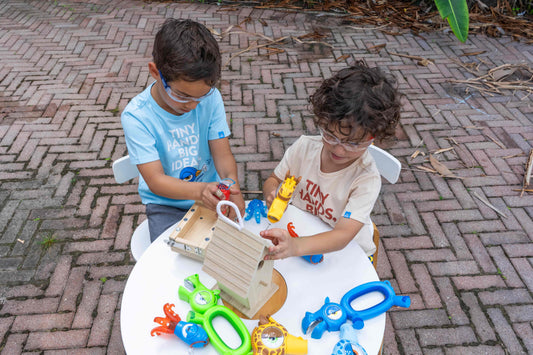
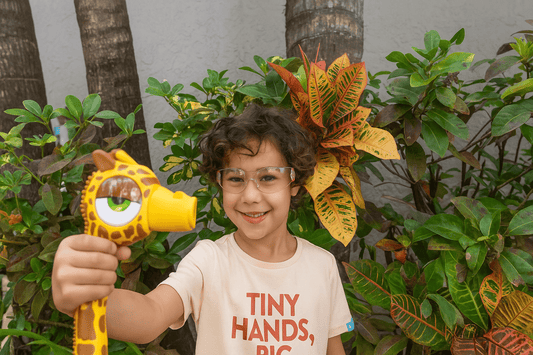
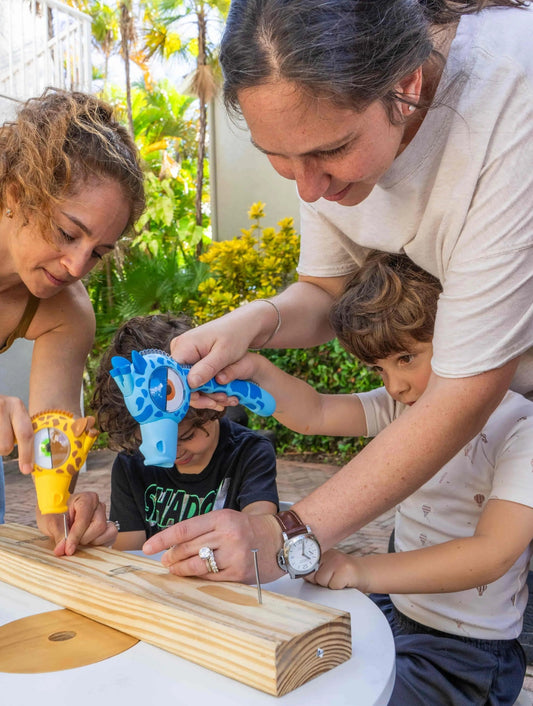
 https://handyfamm.com
https://handyfamm.com